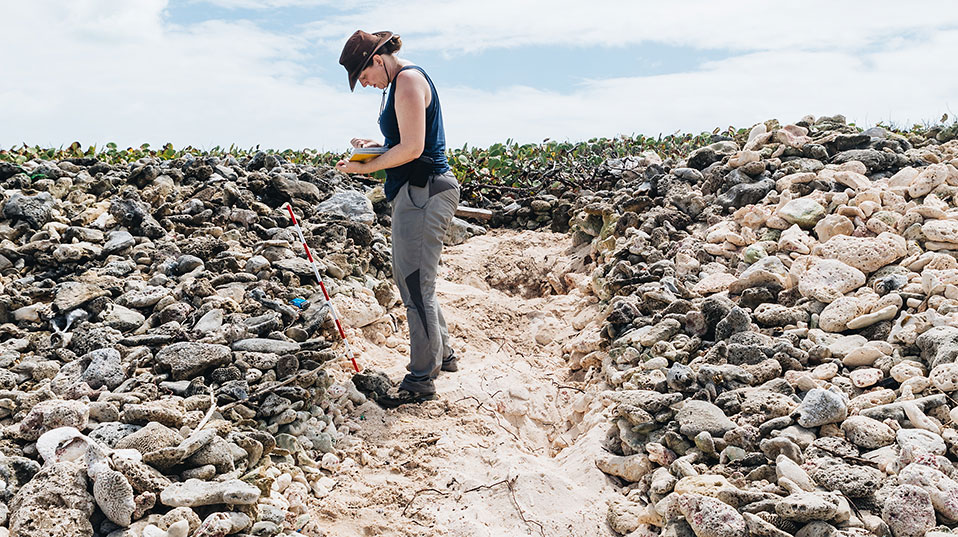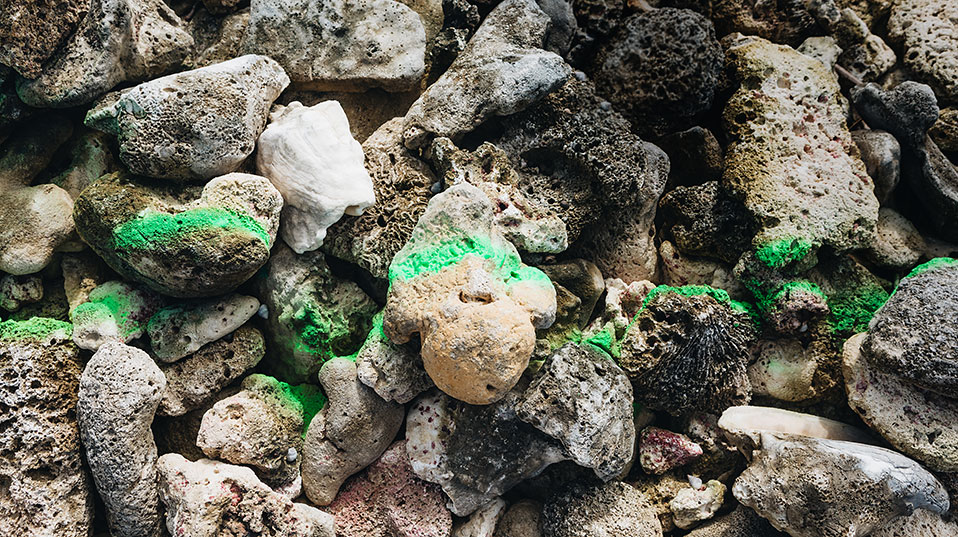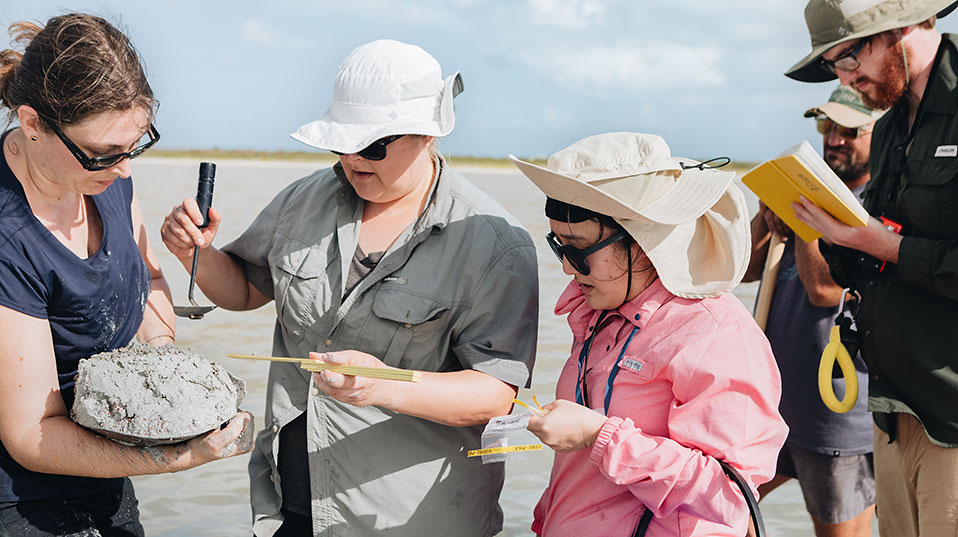On the trail of tsunamis.
Text: Reto Caluori
Researchers on the Caribbean island of Anegada have uncovered evidence of two major historical tsunamis.
The Caribbean island of Anegada may look like a tropical paradise, but tsunamis are capable of wreaking havoc on this northernmost of the British Virgin Islands. Rising just 8.5 meters above sea level, the coral island is threatened with devastation by strong winds and huge waves during the annual hurricane season.
Besides leaving a trail of destruction, flooding events also leave sediment deposits on the ground. Researchers can use this geological testimony to deduce the intensity and frequency of hurricanes and tsunamis that struck even many hundreds to thousands of years ago.
In September 2017, the Caribbean island experienced the highest category of hurricane, category 5, when it found itself in the path of Hurricane Irma. Yet, the island’s sediments preserved signs of far greater events than Irma. When a team of researchers led by geologist Dr. Michaela Spiske from the University of Basel conducted field work on Anegada, they uncovered evidence of two major tsunamis that struck the island within the last 800 years. One of these tsunami events was triggered by the 1755 Lisbon earthquake.
In the field, the geoscientists measure and map flood parameters, such as water levels and inundation distances, as well as documenting morphological changes on the surface and collecting samples of deposited sediments. In combination with laboratory analyses, this data helps to improve existing tsunami models, allowing researchers to estimate the long-term risk of a region and to adapt the early warning systems accordingly.
Michaela Spiske is a private lecturer of exogenous geology and sedimentology. At the Department of Environmental Sciences of the University of Basel. Her research focuses on erosion, transport and deposition processes during natural hazards such as tsunamis and storm surges, which can significantly alter or even destroy a coastal region within a few hours.
More articles in the current issue of UNI NOVA.







